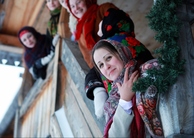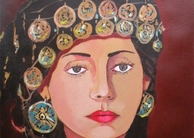Featured Article:Idle Youth: Using Sport to Address the Youth Bulge in Sierra LeoneCapacity Building, Sustainability and Policy CoherenceAid is a problematic issue with regards to development. Misappropriation, over-pledging, restricted aid, 'sticky' aid, and over-dependence on aid are just a few factors that are detrimental to the developmental potential of aid in their own right. However this is not to say that aid is negative, but instead supposes that aid on its own does not always provide the right platform for a country to move from crises prevention to genuine economic and social development. Therefore capacity building is what is needed if the transition from aid dependency to economic stability is to be meaningfully made. This rests not so much on aid but rather a concerted effort to improve the levels of education and belief needed in society to start-up and continue ventures across the whole social and entrepreneurial spectrum. Building capacity also hinges upon creating an environment conducive to easy transfer of knowledge and ideas both horizontally and vertically through society. In Sierra Leone students said they were able to transfer knowledge they gained from sport for development programs to friends, parents and other community members. In both Makeni and Freetown, Sierra Leonean parents reported that children spoke about and advised them on issues related to HIV and AIDS that they learned through Right To Play games and activities.78 Whilst conflict prevention and peace building techniques must be geared towards providing society with the means to improve their own capacity, they must also be sustainable: following bitter conflicts, sustainable peace is really only available on the basis of a sustained effort lasting many years. This does not mean that all peace building projects have to be sustained for so long, but that the overall strategy builds enough regenerative and sustaining capacity to see the process through.This is by no means simple. Multi-dimensional policies are required to take on the complex task of encouraging war-torn and war-threatened societies to develop peaceful relations. This emphasis on a broad range of activities is supported by the conclusions of the aforementioned academic research into conflict causation by Stewart, Leahy, Collier and others. This approach to policy necessitates ‘multi-level cooperation between ministries and departments with different institutional cultures.’79 In other words, policy coherence is required if multi-donor and government efforts are to be successfully pooled. In a tidy summation, this means ‘different policy communities working together in ways that result in more powerful tools for all concerned. It means devising strategies and filling gaps so as to meet shared objectives.’80 As mentioned briefly earlier, there are four dimensions to policy coherence: within the internal departments of each aid agency (internal); across the different aid agencies (harmonisation); between donor and recipient governments (alignment); and from those recipient central governments out to their more rural and disparate provinces (whole of government). Fulfilling these is required if coherence amongst objectives, aims, actors, and instruments is to ensue. In Sierra Leone institutions are increasingly in place to facilitate this joined up approach. The Sierra Leone Association of Non-Governmental Organisations (SLANGO) is an umbrella institution that works to bring all operational NGOs into close and regular contact with not only each other, but also both local and national government arms. SLANGO prioritises common welfare above individual NGOs and (with regards to sport for development) helps coordinate play days, radio showsand sports festivals to promote collaboration between community-based organisations, NGOs, and other agencies so that these groups can better reach shared development goals. In addition, the ‘Physical Education Teacher’s Council’ (PETC) is a national organisation that provides a forum for teachers to share teaching techniques and devise new ways to encourage both more teachers and students to participate in physical education. This community group network has created pioneering child protection and gender violence protection programs which use sport to transmit invaluable information to children and youths regarding their rights. Such improved commitment to policy coherence and cooperation has allowed intensive decentralisation of programs. Local staff of War Child, Save the Children, Oxfam, Right To Play and others are equipped to identify and sustain strong partnerships with other community-based organisations and local NGOs, as well as national ministries, international NGOs and UN agencies. This allows for better transfer of aid and knowledge to more remote areas. This builds capacity in otherwise neglected regions by diminishing the chance of horizontal inequalities arising from geographical remoteness. It also decreases reliance upon a central office and induces a much higher degree of project sustainability. Therefore policy coherence enables the design of conflict prevention schemes that are locally sensitive yet still firmly connected to the larger national and regional agendas. Through inter-organisation mechanisms such as SLANGO and the PETC, Sierra Leone is raising it own bureaucratic capacity to deliver more impacting sport for development projects at a cheaper cost thanks to better channels of cooperation that dampen the possibility of aid duplication. Therefore to a certain degree the situation looks encouraging. In addition to SLANGO, most NGOs are striving for alignment individually– for example Save the Children has a full time Technical Advisor who works with the Sierra Leonean government. In addition the national youth policy is clear in its intent to work with all concerned parties ‘so as to lay the foundation for the emergence of a responsible citizenry in the service of a one and indivisible Sierra Leone’81: The National Youth Policy is anchored on the twin notion of youth empowerment and the creation of a responsible citizenry. To achieve this, this revised policy seeks to strengthen collaboration between Youth Organisation/Youth serving Agencies, NGO’s, and all line Ministries that have youth related activities.82 This cooperation it is hoped will continue to create mechanisms in the Ministry of Youth and Sports wherein effective state policy on youths can be ever better designed and implemented through ‘reliable and efficient networks’ across the public, private, and charitable sectors. It is hoped this will create a ‘level playing field for youths to actualise their fullest potentials, be competitive nationally and globally, and to contribute as good, responsible citizens to the development of their country.’83 However there is by no means complete policy coherence in Sierra Leone. The next chapter will outline this amongst other short-comings of sport for development programs. The Short-Comings of Sport for Development ProgramsHaving previously demonstrated the positive effects sport for development initiatives have on Sierra Leone’s youth, this chapter will attempt to highlight some of their limitations and assess how these limitations hinder its conflict-preventative potential. It will also look at negative by-products of sport such as rivalry and its prospective violence. Having already linked war to sport,84 Martin van Creveld adds that as well as the latter’s more positive attributes mentioned thus far, sport can in fact potentially cultivate a culture of violence and societal division. He argues that war (and by association sport) is fundamentally enjoyable, noting that its inherent danger ‘calls forth qualities such as boldness, pride, loyalty and determination. The joy of fighting,’ he concludes, ‘[is] that it permits participants and spectators alike to forget themselves and transcend reality.’85 This is an interesting argument that, true to the entire book the quotation is taken from, is intentionally sensationalist. However it is difficult to agree with his assertion that war is enjoyable. Such a claim fails to recognise the moderating effects of society on war and the disinclination of ordinary people to murder even in extreme situations. We can look to Hobbes to support this. He deduces that civilised men are inclined to avoid sources of pain and death that are close. If the preservation of self and not the murder of your foe is the ultimate goal for everyone, fear of death and an unwillingness to take it is a major reason for peace in Hobbes’s state of nature, and also proof enough of the societal limitations on absolute conduct of war.86 However van Creveld’s conclusion that sport on a professional level can incite an almost ethereal fanaticism amongst spectators than can potentially turn violent is built upon firmer ground. Especially in urban areas, fights can erupt on Saturday afternoons after televised Premiership football matches as the bars dedicated to particular teams that pock the major cities spill-out. These peculiar conflicts of identity serve to divide communities along lines of loyalty to teams thousands of miles away. This potential for division is but one example of sport’s negative side-effects. It shows that sport must not be over-relied upon to be the vehicle best equipped to alleviate poverty and temper social tensions. It is but one vehicle in a viable socio-economic cavalcade which must move steadily and in unison for greatest effect. Indeed Dr. Cummings of Right To Play commented that ‘sport can easily bridge gaps in post-conflict societies, but to ensure this gap is not artificially spanned other things are needed. Sport on its own will not create the necessary environment for assisting children and youths to realise their goals.’87 For example, in a meeting with students in Freetown sport was largely seen as just a past-time. Yet despite failing to attach any sort of greater meaning to sport, this is still positive in that sport is a past-time that is both safe and healthy. However on a more worrying note there were quite a significant number of youths who saw sport as merely an exit strategy. This is especially true with regards to football. The coruscating wealth of European football is enticing to a youth population still under-cared for and highlights the enormous disparity with Sierra Leone’s own national league. This is not helped by the Sierra Leone Football Association (SLFA) which is considered to be ‘poorly run and corrupt [with] leaders elected because of wealth and cronyism rather than their ability to do the job well. As such the level of national football is falling. There is no youth system. This leads to political and institutional disillusion, anger, and frustration’88 which, I argue, manifests itself in abandonment or exit of the national league by players and spectators alike in favour of foreign set-ups. This supports David Taylor of Insight.org and formerly of Oxfam’s view that ‘sport for a lot of youths with nothing becomes not a social mobiliser, but a personal vehicle for exiting the state in search of riches.’89 To give a further an example of this outward focus, I asked ten school children in Freetown to name three Sierra Leonean football players– nine out of the ten could not, but all ten could name five or more Manchester United, Chelsea, Arsenal, or Barcelona players. Therefore it could be argued that in some respects sport is in fact a hindrance to national development given that the unavoidable outward focus of players and fans ‘reinforces dejection and the idea that Sierra Leone is not good at anything’90 and encourages state exit. This begs the question of whether implementing sport programs should be a governmental priority. Indeed Moses F. S. Kargbo asserted that the biggest problems in need of swift governmental attention in Sierra Leone are:
However Mr. Kargbo also added that ‘sport can help improve these by twinning its mass appeal with academic or vocational messages. Sport must supplement education, especially of women and girls.’92 It seems wise therefore to add his sentiments to those of Dr. Cummings 93 and conclude that to get the best out of children and youths, and to guarantee maximised vocational opportunities, sport must work in unison with more academic education techniques. Yet the potentially serious shortfall here lies in sport’s inability to solve Mr. Kargbo’s third pressing issue, the ‘lack of jobs.’ Sport can provide the right environment to prepare youths for smoother and more profitable entry into employment, and it can maintain positivity, fitness and regular interaction, but it rarely leads directly to paid work. This is of particular concern to the country’s worryingly idle youth. Twenty one year old Ernest Gborie from Bo is a high school graduate and has a diploma in information technology from an institute in the USA. However he is unemployed apart from occasionally working at a children's rehabilitation centre. In an interview with the BBC World Service he revealed that: What concerns me is the lack of jobs, especially for us youth. I really want a permanent job. I want to work for my country, to bring development. Education is good, all we need are jobs.94 Therefore sport for development projects can only really mobilise and improve society at the pre-employment or between-employment stage, just as the micro-economic Sport for Development multiplier effect (see figure.4) depicts. After this it is up to the government to utilise this better skilled and educated youth by creating work that links them firmly into Keynes’ macro multiplier effect (see figure.3). It can only be hoped that the presence of a more knowledgeable, healthy and trained workforce will both attract more foreign investment and stimulate more business entrepreneurship needed to invigorate the country’s economy. Twinned to this it must be recognised that if the government is to create these jobs, the area that really requires the most work is policy coherence. Sadly this is perhaps the area where sport for development initiatives can do very little. Despite highlighting the positive strides made in this area in the previous chapter, serious discrepancies in the efficacy of the relationships between the government and NGO sectors remain. Truly strong, well-funded governance is missing. This in turn hinders alignment, and with it impedes the possibility of the general populace directly linking the work of NGOs to the government itself. For example in Kroo Bay, the most impoverished area in Freetown, Save the Children, Concern, the YMCA, UNICEF and Right To Play work to improve the lives of locals. To cut costs and increase the impact of their work these NGOs have formed the ‘Slum Partners Development Coalition.’ This coalition coordinates efforts to clear space for safe play areas away from the septic and often swollen Crocodile River; establish football leagues to occupy the most abandoned and poorest children and youths in the country; provide maternity care and pre-natal clinics; and set up temporary schools and vocational centres. Whilst this is a great example of policy harmonisation, it is sadly void of genuine governmental alignment. This is disastrous with regards to forging a meaningful social contract between the government and its people, as the later look not to the government for help, but to the visibly busy NGO sector. Much of what Sierra Leone’s plethora of NGOs and governmental departments are working towards today is derived from the 2002 Monterrey Consensus and the 2005 Paris Declaration, both of which are concerned with poverty reduction, national ownership, and results orientation.95 However sport for development initiatives cannot hope to force alignment, harmonisation or dictate a coherent ‘whole of government’ approach alone. For whilst the government may be using sport and its associated positives as a cheap cure for many of its social ailments, it also appears that certain governmental departments are instead pursuing antithetical policies such as arms trading or embezzlement that undermine a truly whole of government approach. There is also the problem of widespread governmental corruption. Indeed whilst the government’s anti-corruption campaign features a man kicking a ball above the slogan ‘kick out corruption,’ (a quick reminder of sport’s ability to grab peoples’ attention) a new report commissioned by President Koroma has unearthed ‘grave inadequacies in key areas such as health care, tax collection and the security services.’ The report shows that in one ministry alone, five hundred thousand dollars of foreign aid vanished in 2007. Such profligacy led President Koroma to say that ‘corruption is the greatest impediment to the country's development.’96 Furthermore, Education Minister Dr. Minkailu Bah says he has discovered dozens of non-existent ‘ghost teachers’ invented by officials to embezzle money. ‘Many of the 33,000 teachers receiving salaries existed only on paper,’ said Dr. Bah, and the lost revenue will realistically ‘amount to hundreds of thousands of dollars.’97 Sport is arguably not the medium needed to address this ‘very serious threat to our peace and stability.’98 Instead, sport’s real influence lies at the micro level, working directly with communities to promote social harmony and provide education and democratic experience that can empower the future generation of society leaders with the faith to act more transparently.Continued on Next Page » Suggested Reading from Inquiries Journal
Inquiries Journal provides undergraduate and graduate students around the world a platform for the wide dissemination of academic work over a range of core disciplines. Representing the work of students from hundreds of institutions around the globe, Inquiries Journal's large database of academic articles is completely free. Learn more | Blog | Submit Latest in Anthropology |


















